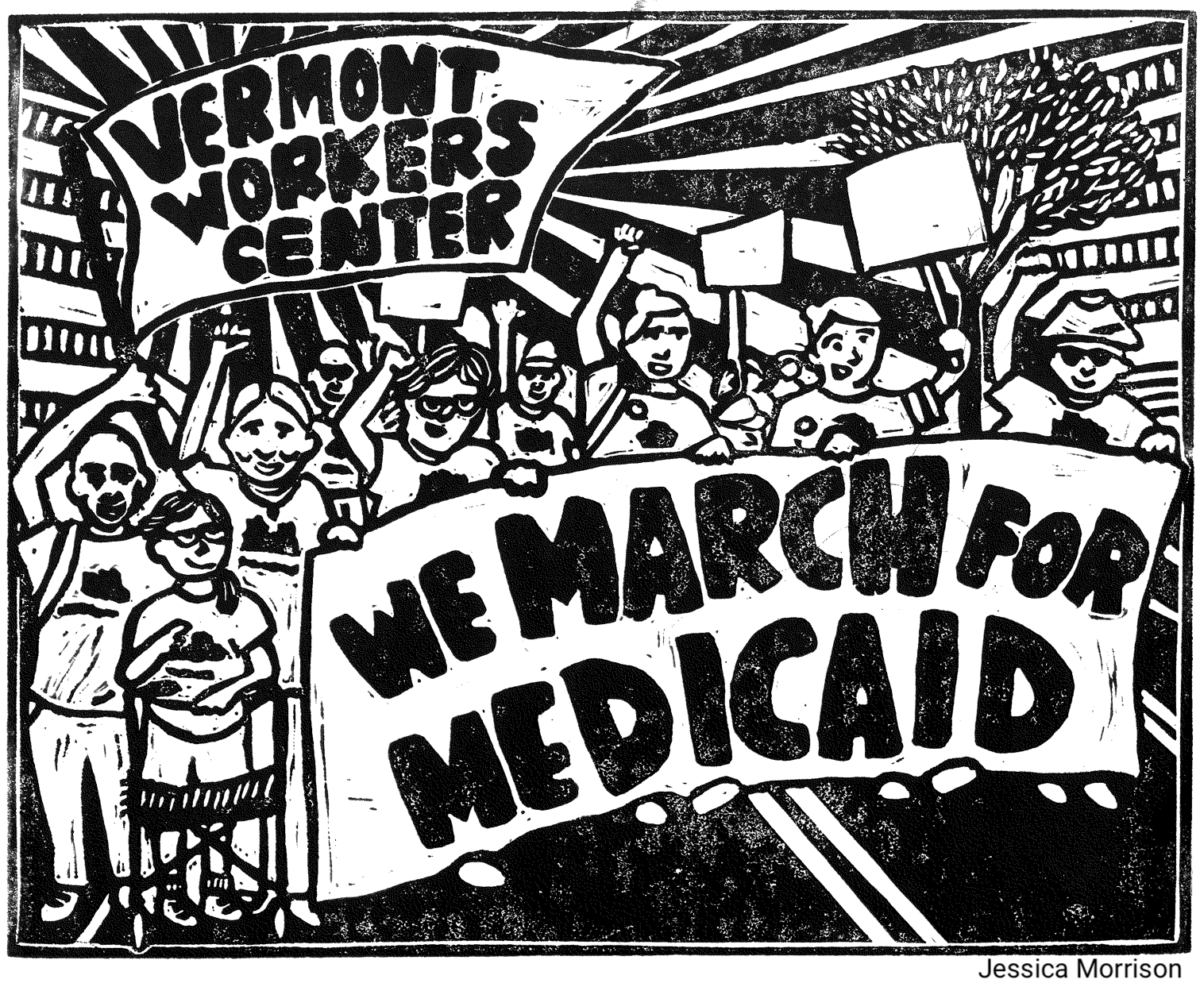Vermont Workers’ Center Says Single Payer Possible by 2017

The Vermont Workers’ Center and the National Economic and Social Rights Initiative say single payer health care could still be on the table.
Building off the financing plan that Gov. Peter Shumlin used in deciding not to proceed with single payer, the study, published in February, says the state can use progressive tax structures to provide a universal program by 2017. (Full plan attached below).
The plan would give medical, dental and vision coverage for all Vermont residents, but would exclude those who work in Vermont but commute from other states.
The plan assumes the same 6 percent out-of-pocket costs as Shumlin’s report from Dec. 30, but proposes progressive income taxes, a progressive payroll tax on employers, taxing capital gains as income, and liquefying the assets of Blue Cross Blue Shield of Vermont into a reserve fund.
Ellen Schwartz, president of the Vermont Workers’ Center, said her organization began developing the alternative plan in December, immediately after Shumlin released the details that led him to put single payer on the back burner earlier that month.
Schwartz said the two organizations’ plan is “more equitable” than the governor’s because the organizations recommend a graduated payroll tax — starting at 4.1 percent for small companies and maxing out around 20 percent for the government and employers with 1,000 or more workers.
“One of the reasons the governor said (single payer) wouldn’t work for small businesses is he had an 11.5 percent flat payroll tax on all businesses,” Schwartz said, adding that her organization “wanted something that wouldn’t harm small businesses.”
Anja Rudiger, program director for the National Economic and Social Rights Initiative, said her organization considered the governor’s plan inequitable.
“We focus on equity in this report because that’s what we saw was the biggest shortfall in the governor’s report,” Rudiger said. “When we took a look at his proposal, we were actually not surprised.”
Similar to the governor’s plan, the organizations recommend a sliding scale tax on earned income of up to 9.5 percent. However, the groups call the governor’s plan to cap the income tax when a household reaches $27,500 in payments “regressive.” They recommend that all income above 523 percent of the federal poverty level be subject to the 9.5 percent tax.
The study recommends implementing a wage ratio aimed at eliminating the incentive for companies to lower wages as a way to lower payroll tax obligations, and includes a Medicare wrap-around to bring Medicare patients’ coverage up to the same level as Green Mountain Care.
Additionally, the study proposes repealing the law that allows high-income Vermonters to pay a lower percentage in taxes on capital gains than on earned income.
The study says repealing the capital gains tax exclusion would have generated $17.3 million in revenue in fiscal year 2013 and estimates that the state lost $7.8 million in 2012 from high-income households that benefit from the capital gains tax exclusion.
Jim Harrison, president of the Vermont Retail Association, said his group “appreciates” a graduated approach to the payroll tax that takes small businesses into account. However, the group does not have a position on the study in general.
“We would be concerned for what the impact would be on the economy at the higher levels,” Harrison said of the nearly 20 percent payroll tax on employers with more than 1,000 workers. “There could very well be some impacts.”
Harrison estimated that the employer’s share of federal payroll taxes for Social Security and Medicare is around 7.7 percent; he said payroll taxes could cost around 9.5 percent for Vermont employers when you include what businesses spend on workers’ compensation and unemployment insurance.
“Payroll cost is often times the biggest single cost of every business,” Harrison said. “It would be very concerning if (large businesses) chose not to stay in the state.”
Betsy Bishop, president of the Vermont Chamber of Commerce, said the profit margins on her members are too thin to pass any more payroll taxes in the Legislature.
“We have a real concern about raising a payroll tax, using that as a funding source for any long-term state need,” Bishop said. “In our view, taxing payroll is in essence suppressing wages, and there’s no other place for it to come out than on that line item.”
To address the employer cost of workers’ compensation insurance, the organizations recommend phasing the costs into Green Mountain Care, but do not outline a period of time or method for doing so.
The study recommends integrating workers’ compensation into Green Mountain Care through a tax, saying that it would “streamline healthcare access for workers and would also reduce redundant administration.”
The organizations also recommend dissolving Blue Cross Blue Shield of Vermont and turning the Green Mountain Care Board into a public corporation. The state would then keep Blue Cross Blue Shield’s estimated $132 million in surplus, based on figures from 2013, to fund a reserve fund for Green Mountain Care.
The study says the $132 million figure is almost as much as the state needs for a reserve fund, and says the governor over budgeted when he planned a $200 million reserve fund in his Dec. 30 financing plan.
According to the study, Vermont should still work to obtain a federal Medicare and TRICARE waiver, negotiate prices with pharmaceutical companies, set rates for hospitals, include long-term care, and work toward a program with no out-of-pocket costs.
The groups say the plan can be implemented with a $362 million surplus by 2017. Schwartz said the Vermont Workers’ Center wants the Legislature to pass the plan this year.
Additional Resources
 VWC_says_single_payer_possible_by_2017-VTDigger
VWC_says_single_payer_possible_by_2017-VTDigger
